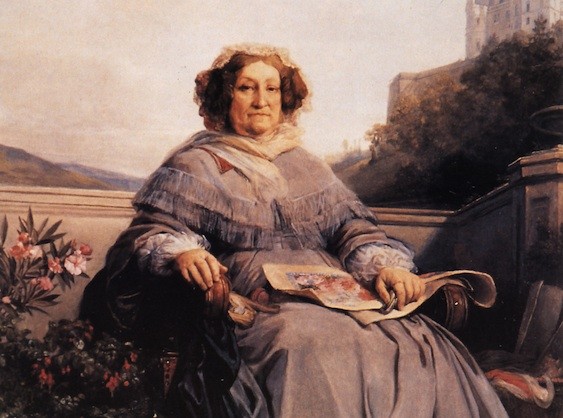If you’ve ever been to a champagne house in France, you’ve probably noticed these funny diagonal wooden tables with holes in them. Those are what they call “riddling tables” (or pupitre de remuage in French) and they were essential to solving one of the great riddles of producing champagne as we know it today.
You might recall from a previous post on how champagne gets its bubbles that champagne undergoes secondary fermentation within individual bottles, producing the carbon dioxide that gives champagne its fizz.

Riddling tables are essential to the way champagne is made today.
However, that means that there’s a lot of yeast and other sediment in those bottles just sitting there (and giving champagne some of its flavors) long after secondary fermentation has ended. Why does that matter? Well, if you leave the sediment and all those dead yeast cells in the bottle, it will have a cloudy appearance since that muck tends to stick to the side of the bottle. So it’s pretty much an aesthetic thing. You want your champagne to be clear and golden to better show off its sparkle.
Enter a brilliant young entrepreneur by the name of Barbe-Nicole Clicquot Ponsardin, whom you might better recognize as Veuve Clicquot. Veuve means “widow” in French, and this high-minded lady was indeed a widow. She took over her husband’s fledgling wine business when he died in 1805, capitalized on emerging markets like the Russian imperial court, and eventually turned a small side enterprise into an empire.
But she was still annoyed that her popular sparkling wines were cloudy. Rather than keeping bottles upright so the sediment would fall to the bottom, or transferring the wine from bottle to bottle until there was no sediment left, she wanted to get the sediment out of each bottle altogether and to do so in a fast, efficient manner.
According to legend, it was while she was sitting at her kitchen table that inspiration struck. She cut circular holes in it, leaned it up against the wall and experimented with rotating bottles so that the sediment would collect closer to the mouth of the bottle. Riddling was born!

Veuve Clicquot was the formidable lady behind the riddling table…and pretty much the entire champagne industry as we know it!
In 1810 she hired a German man named Anton Muller as her cellar master and he perfected what would become the riddling table, with an A-frame form and bottles angled at 45 degrees. Bottles are placed neck-down in the wholes and turned by stages, either an eighth or a quarter of a turn at a time, to the right or left with the downward angle increasing slightly with each turn. Each bottle is turned every one to three days for an average of 25 times over the course of about a month.
Instead of just shaking the bottle, which would just send the sediment back into the main portion of the wine and cloud it up again, by twisting the bottle slowly and methodically over the course of several days, you gently dislodge it from the sides of the bottle toward the neck where it can be easily gotten rid of. When the time comes, it’s easier to get it out, cork the bottle and send it off to market.
It was also a stroke of genius when it came to efficiency. Rather than laboriously having to move the wine from bottle to bottle, or remove the sediments another way, this was a relatively simple, cheap way to get all those cloudy particles out and fill Veuve Clicquot’s orders much faster. Riddling worked so well that it became standard form in the champagne industry for nearly two centuries…though not immediately, because Barbe-Nicole and her workers guarded the secret of riddling from her competitors successfully for a few decades!
Now for the sad bit. Though you can still find some master riddlers (yes, that’s seriously the job title) at small champagne houses who can turn thousands of bottles an hour by hand, most riddling is now done by machines called gyropalettes. It’s less romantic, but at least the name is fun to say! One gyropalette can accommodate up to 500 bottles at a time, and because they can work 24 hours a day, they can complete this part of the champagne-making process in about a week.
And as for Veuve Clicquot? It’s become one of the world’s highest-selling brands of champagne and perennially ranks around first to third place here in the US.
Got any more questions, or should I say riddles? Tweet me @clustercrush!

